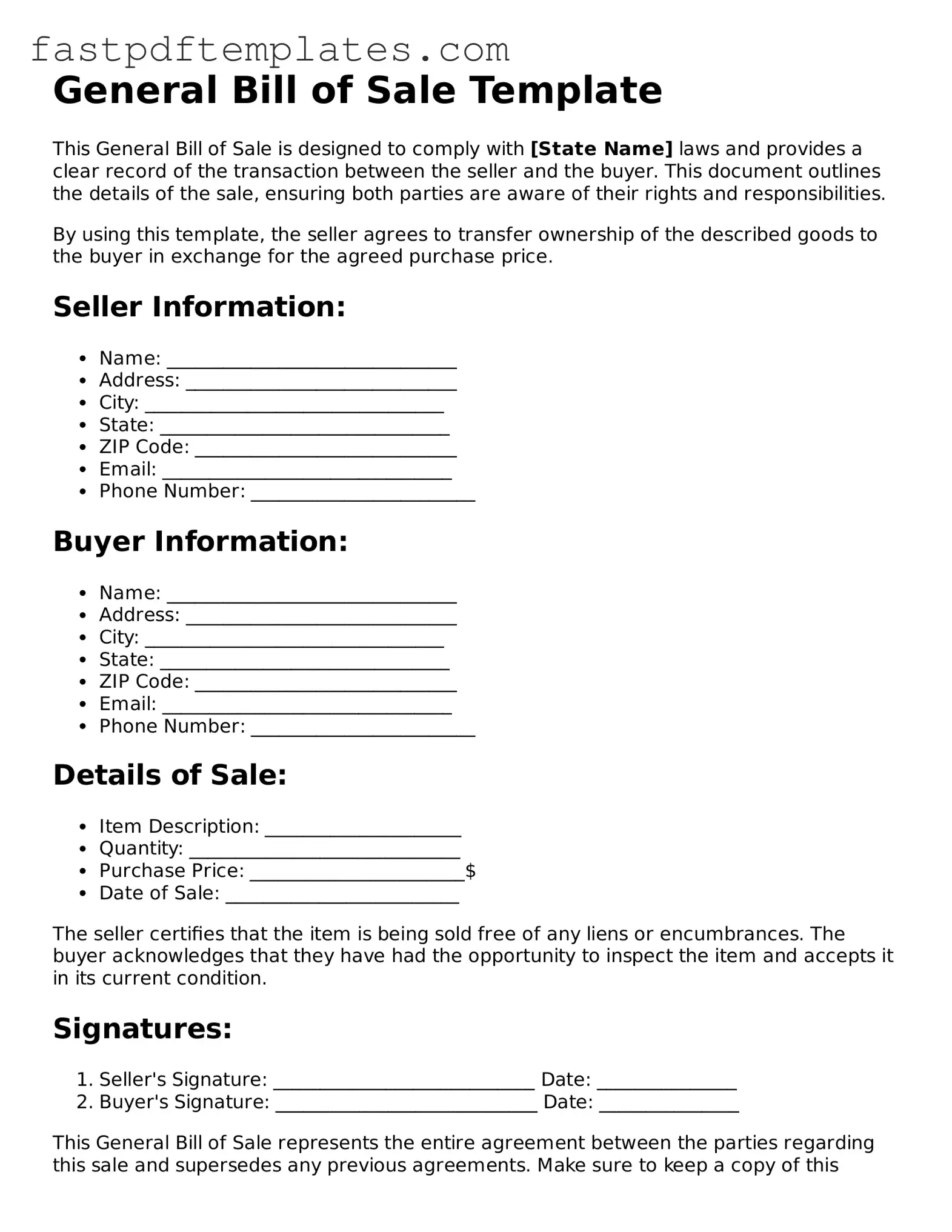A Vehicle Bill of Sale serves a similar purpose to a General Bill of Sale but is specifically tailored for the transfer of ownership of a vehicle. This document includes details such as the vehicle's make, model, year, and Vehicle Identification Number (VIN). It also outlines the purchase price and any warranties or guarantees provided by the seller. By documenting this transaction, both parties have a clear record of the sale, which can be crucial for registration and title transfer with the state.
A Personal Property Bill of Sale is another document that closely resembles the General Bill of Sale. This form is used to transfer ownership of personal items, such as furniture, electronics, or collectibles. It includes descriptions of the items being sold, the sale price, and the names and addresses of both the buyer and seller. This document provides a legal record that can help prevent disputes over ownership in the future.
An Equipment Bill of Sale is specifically designed for the sale of business or industrial equipment. This document details the type of equipment, its condition, and any warranties or guarantees. By using this form, both the buyer and seller can ensure that the transaction is documented properly, protecting their interests and clarifying any terms related to the sale.
A Firearm Bill of Sale is used when transferring ownership of a firearm. This document includes details about the firearm, such as its make, model, and serial number. It also requires both parties to provide identification information. This form is particularly important due to the legal regulations surrounding firearm ownership and transfers, ensuring compliance with state and federal laws.
An Animal Bill of Sale is utilized for the transfer of ownership of animals, such as pets or livestock. This document specifies the type of animal, its breed, age, and any health guarantees. It helps to formalize the transaction and provides a record that can be useful for registration or veterinary purposes. Both the buyer and seller can feel secure knowing that the terms of the sale are clearly laid out.
A Business Bill of Sale is relevant when selling a business or a portion of it. This document outlines the assets being sold, including inventory, equipment, and goodwill. It includes details about the purchase price and any terms related to the sale. This form is essential for both the buyer and seller to have a clear understanding of what is included in the transaction, protecting their rights and interests in the process.
